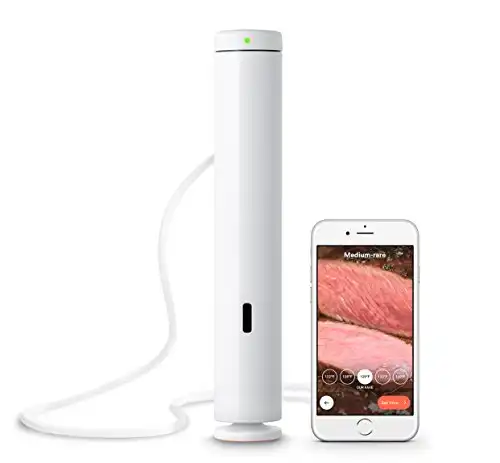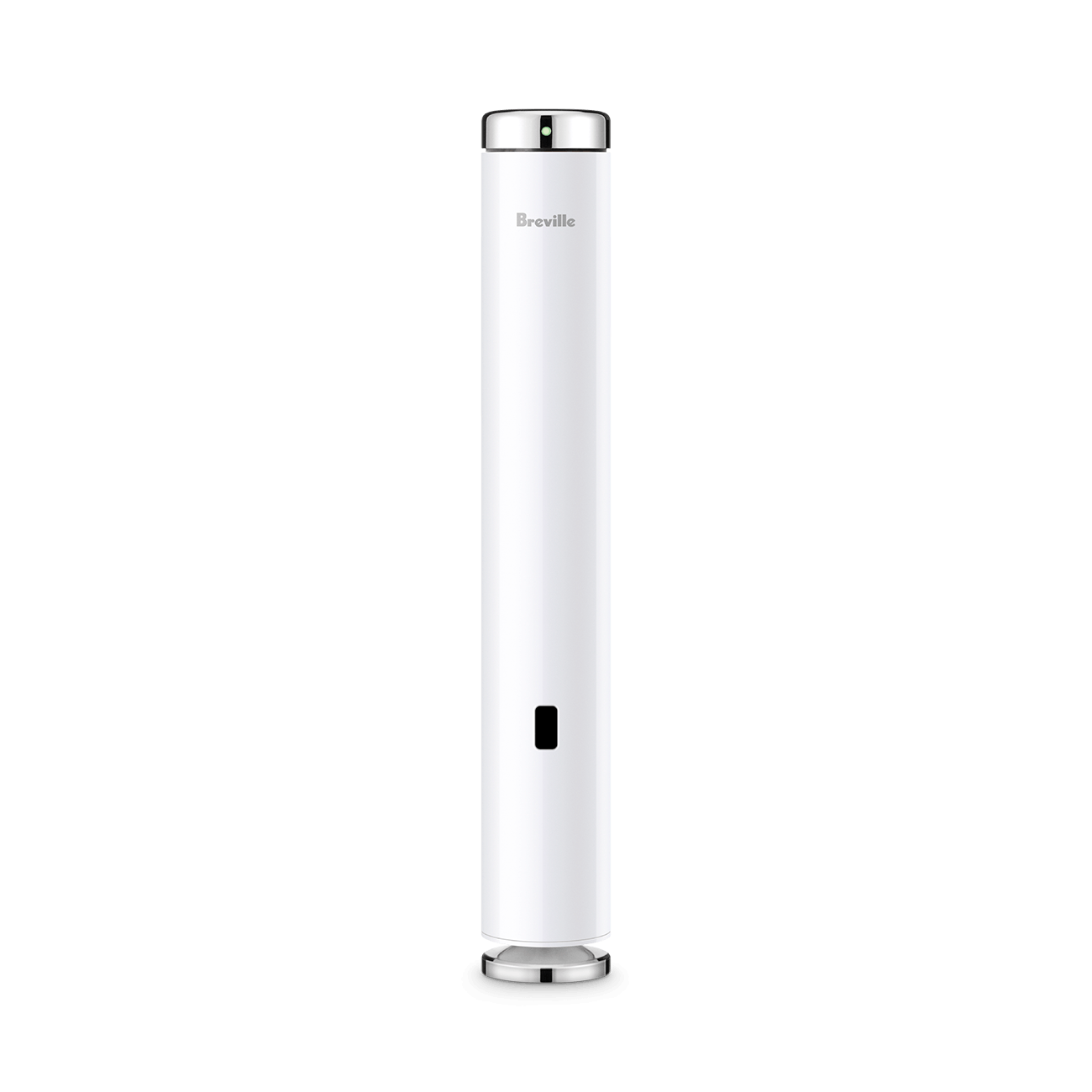The Breville Joule Sous Vide cooker series is a great, high-tech immersion circulator series that’s set itself apart from other sous vide machines to be a bestseller. The recently released Breville Joule Turbo makes a major technological leap forward by reducing cooking times by up to 50%.
The Joule is small and sleek, unlike its large and bulky competition. Despite being the smallest cooker, it’s among the most powerful sous vide cookers out there. Even better, the price on the Joule sous vide was recently dropped by over $100.
The Joule Turbo is slightly larger than the Joule, at about an inch taller, to accommodate added smart technology to provide the option of Delta-T cooking. Delta-T cooking reduces the cook time meaningfully by increasing the water bath temperature without compromising the quality of your food.
You can watch my first time trying a turbo sous vide cook here:
While you might think the breakthrough technology of the Joule Turbo would cause it to cost more than the Joule, you’d think wrong. At least at the time of writing, these two models are the same price.
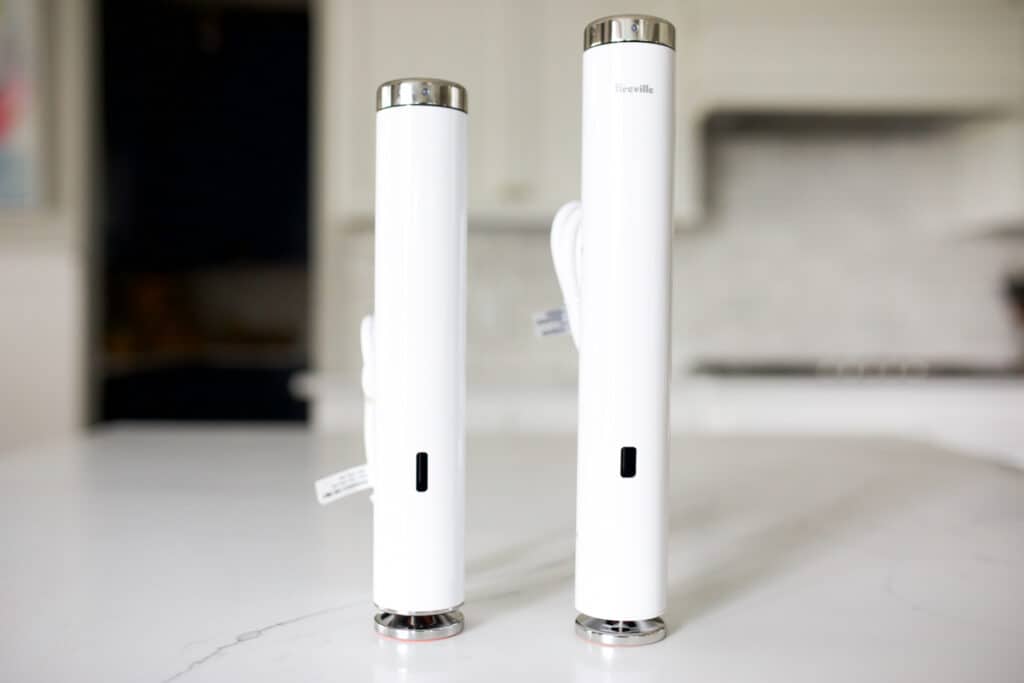
The Joule series is the premier series of sous vide cookers. They’re small yet pack a powerful punch with 1100 Watts of power. The clean, modern design is also highly appealing. The accompanying app is the best on the market, hands down.
But there is one drawback, it can only be controlled through the mobile app. There are no physical buttons or touchscreen.
- The Joule was a top sous vide machine in my Best Sous Vide Cooker article comparing all the top sous vide cookers.
I’ll go through the details of the Joule in this review. We’ll look at its various features and benefits, as well as where it falls short.
One Note: The Joule used to be under the ChefSteps brand before Breville acquired ChefSteps. That’s why you’ll see ChefSteps Joule sometimes, but know that it’s the same Joule.
If you’re looking for something commercial grade, do also check out the review for Breville’s newest series of sous vide cookers, the Breville HydroPro Plus Review. If something more budget oriented is what you’re looking for, the INKBIRD Sous Vide ISV-200W is a great option.
Table of Contents
Breville Joule Specifications
Let’s first take a look at the nuts and bolts of the Joule Sous Vide Cooker:
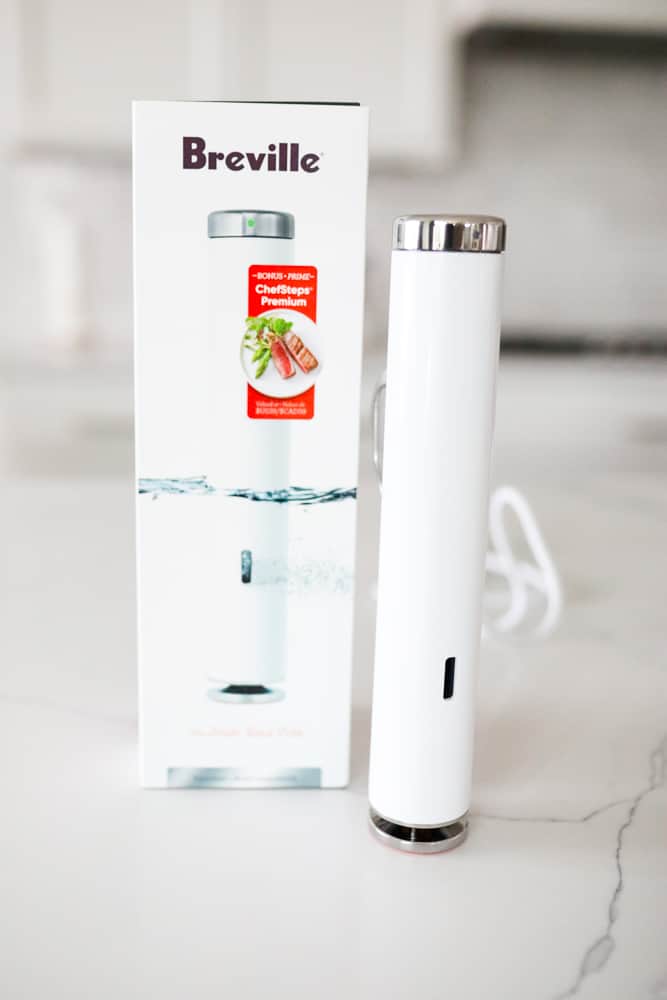
- Product Dimension: 11 x 1.9 x 1.9 inches
- Item Weight: 1.28 Pounds
- Manufacturer: Breville
- Heating Power: 1100 Watt
- Wireless Technology: Bluetooth Smart 4.0 and Wi-Fi
- Mobile App Platforms: iOS and Android.
- Max. Water Volume: 40 Liters (~10.5 gallons)
- Min. Water Depth: 3.8 cm
- Max. Water Depth: 20.3 cm
- Min. Temperature: 20º C (68º F)
- Max. Temperature: 98º C (208º F)
There are two versions of the Joule. The one pictured is the Breville CS10001 Joule Stainless Steel version, which was recently discontinued. The other is the Breville CS20001 Joule White Polycarbonate version (as pictured in the product boxes). The discontinued stainless steel Joule has morphed into the Joule Turbo.
Features and Benefits
In terms of operation, the essential task of any sous vide cooker is to heat the water to a precise temperature and to hold that temperature for the duration of the cook.
The end result is consistently great food. Restaurants have long used sous vide for its consistency and scalability.
In my testing, the Joule certainly succeeded in this core competency.
The Joule Turbo employs another trick of the restaurant industry’s use of sous vide. That trick is Delta-T cooking.
Delta-T uses modestly higher temperatures at the beginning of cooking sous vide to significantly decrease the time needed to achieve sous vide perfection. The Joule Turbo is the only machine on the market capable of applying Delta-T with smart technology; No temperature probe required.
Compact and Beautiful
The Joule reminds me of, dare I say it, Apple products. Beautiful, sleek, compact, and well made. The design is simple and sleek, a departure from the other immersion circulators.
Take a look at this photo of the Joule vs the Anova Precision Cooker 3.0, it’s closest competition. The Joule matches the power of the Anova, but in a much smaller package with very clean design (like Apple):
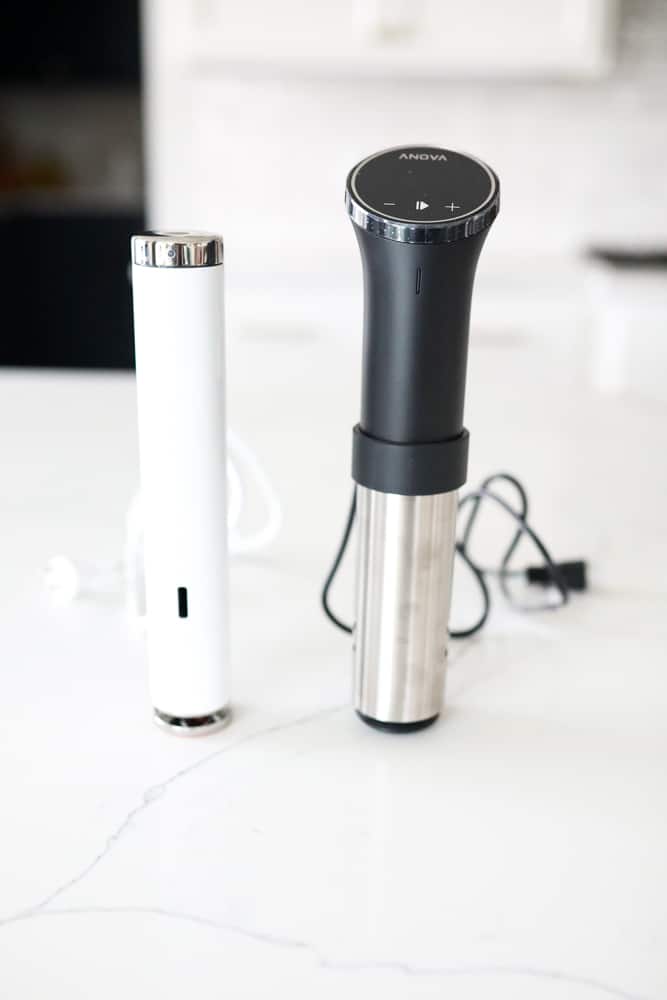
The minimalistic design and small size are my favorite features. The Joule is small enough to store in a kitchen drawer, yet very powerful with 1100 watts.
The Anova Nano 3.0, the entry level cooker from Anova is far less powerful and is the same size as the Anova Precision Cooker 3.0 pictured above. The Joule is much smaller in comparison and much more powerful.
The Joule is only 27 cm/~11 inches tall and just over 5 cm/2 inches in diameter. The Joule Turbo is a tad taller at 31 cm/~12 inches tall and has a similar diameter to the Joule.
Lots of Power
The Joule series brings the heat with its 1100 watts of power. That allows you to heat up to 20 liters of water in an open pot, or 40 liters / ~10.5 gallons of water in a closed sous vide container with lid.
Why does 1100 watts of power matter that much? It more quickly heats the water to your target temperature. It also allows you heat more water for larger cooks.
The Joule’s maximum temperature is 208 ºF, which is good relative to other cookers. But, in reality you won’t need to go to such high temperatures with sous vide cooking. It’s also precise to 0.2°F / 0.1°C, so you don’t need to worry about temperature deviation.
Magnetic Foot
Most sous vide cookers need to hook onto a sous vide container or pot, like in the image above of the various immersion circulators. Most of them have a clamp or clip to attach the devices to the walls of the water bath containers. But the Joule brings something unique, a magnetic foot covered in rubber silicone.
The Joule cooker’s magnetic base means there’s no need for any clips or clamps. It uses the strong magnet to hold the device steady as it cooks the food in your stainless steel or cast iron pot (as long as it’s magnetic).
This way of fixing the device is not only more aesthetically pleasing, but it makes it easier to use. Instead of fighting with the clip or trying to discover how to keep the Joule in an upright position, you simply stand the Joule in the pot.
If your cook allows, being able to place the Joule in the middle of a pot is great. It helps to keep the water temperature even throughout the pot and to heat more quickly.
The downside of the magnetic base is your container must be metal for it to work. Most of us use polycarbonate containers, for which the magnetic base is of no use.
But don’t worry, the Joule series still comes with a clip that will allow you to hook it on to the side of the container.
Here’s my intro to the Joule video that demonstrates the functionality of the magnet and clip.
Easy to Use
The Joule doesn’t have a touchscreen, all the functionalities of the device are controlled on your mobile phone through the app. That’s fine for almost all of us, but if you don’t have a compatible smartphone (iOS or Android), then the Joule isn’t for you. There’re plenty of other great options.
Breville Joule Sous Vide App
The Joule sous vide app is impressive. You can easily program the temperature and time needed to cook through their sous vide recipes in the smartphone app.
The app includes recipes, basic concepts, and more advanced sous vide techniques. You’re able to set and follow along their recipes.
Want to pick how done your steak or pork chops is cooked visually? They’ll give you clips of how done meat is for you to choose from. They even cut into the meat so you can see how the meat reacts to the cut.
Intro to the Joule App Video
If you’re not a chef, the app’s cooking guides and recipes are really useful. There’s no need to look up cooking temperatures and time guides to cook that perfect steak, because the app will give you everything.
You can also control the Joule with voice commands through Amazon Alexa. Voice control is perfect when your hands are busy chopping garlic or preparing another dish.
The Joule mobile app’s top features make sous vide cooking even easier:
- Visual Doneness – allows you to choose exactly how you want your food by displaying various doneness images on the screen. Joule takes care of the time and temperature to achieve the degree of cooking chosen.
- Fresh or Frozen – it’ll set the program to know whether or not it needs to calculate in defrosting time.
- Step by Step Recipe Guides – no need to mix and match from various recipes. The app will give you recipe steps from start to finish. Another great feature is when the food is finished cooking. You may not be able to get to it right away and that’s ok, because it informs you how much longer your food can remain in the water without affecting the food.
You can set the temperature and cooking time in two different ways. Through manual control where you enter time and temperature up to 98º C (208º F) or directly from recipes and individual guides.
You Don’t Need a Large Volume of Water
The Joule uses a novel water circulation system. The propeller-free motor drives a turbine that sucks water through an opening at the bottom and passes it through the heating element.
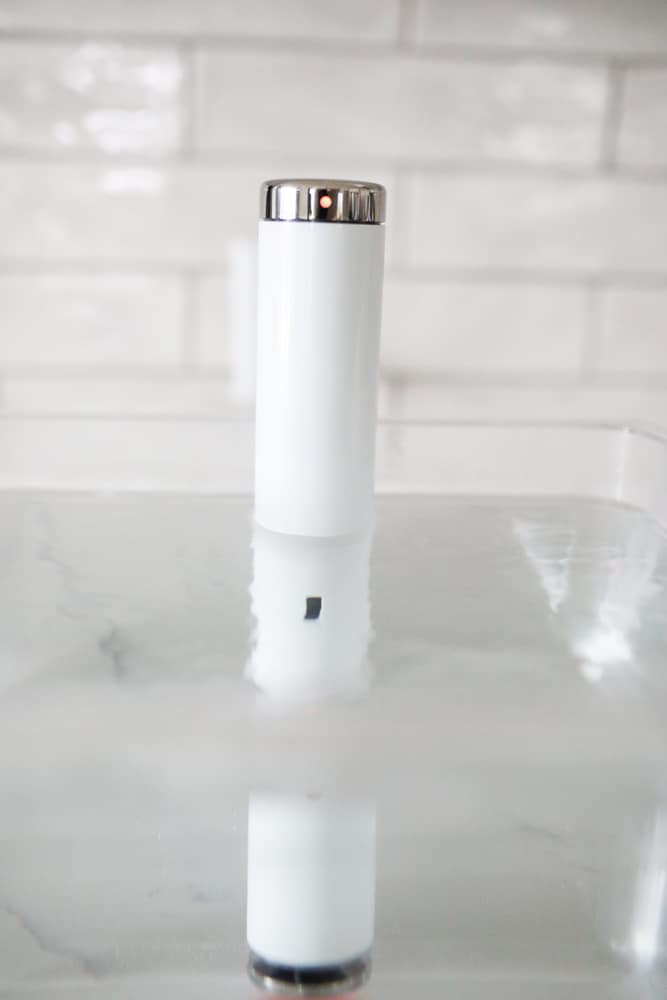
Then it’s removed through an opening a few centimeters up the side of the cooker. What’s great about this is that the output does not need to be submerged for the sous vide to work.
As the magnet allows the immersion circulator to be fixed at the bottom of the pot, only 4 cm (just over 1.5″) of water is needed to operate. Much less than any other sous vide device for cooking at low temperature and vacuum.
The big advantage here is that you’re in far less danger of an interrupted cook because the water level has dropped too low. Low water levels, due to evaporation, causing interrupted cooks can be an issue. Moreso on longer cooks and when not using a lid.
Waterproof
Sous vide cookers should all be waterproof because sous vide cooking is cooking in water after all. But sadly, that’s not the case. Luckily, the Joule is waterproof.
Of the other brands we reviewed, the Anova Precision Cooker series and the Kitchen Boss G300 and G310 sous vide cookers are also IPX7 waterproof. Fortunately, the industry appears to be moving this way.
Waterproof immersion circulators are great because they are easy to clean and wash. You’re able to take them to the sink and give it a rinse if needed.
More often than not, there’s not much cleaning when it comes to sous vide cooking because the cooker is only exposed to the water tub.
Breville Joule Sous Vide Cons
While we’ve mentioned many pros and advantages of the Breville Joule series, there is one potentially big con/disadvantage for some people. Naturally, there are also some other aspects that could be improved.
User Interface for Control
Without your phone and an internet or Bluetooth connection, this sous vide machine is nothing more than a decorative object for your living room.
This is the biggest drawback of the Joule series, and the primary reason why some people do not consider purchasing it. There is no way to control the machine without a phone or tablet. These sous vide machines have nothing but an LED light that shines and a power button at the top.
The only way to set temperatures and times is through the mobile app on a smartphone or tablet. If you don’t have either a smartphone or tablet, don’t get the Joule.
Noise
The Joule isn’t particularly quieter or louder than other sous vide cookers. I measured just under 50 dBA with my sound meter. On the quieter end is the INKBIRD sous vide at 40 dBA. On the louder end is the Wancle at 63 dBA. I measured 55 dBA on the Anova Precision Cooker 3.0.
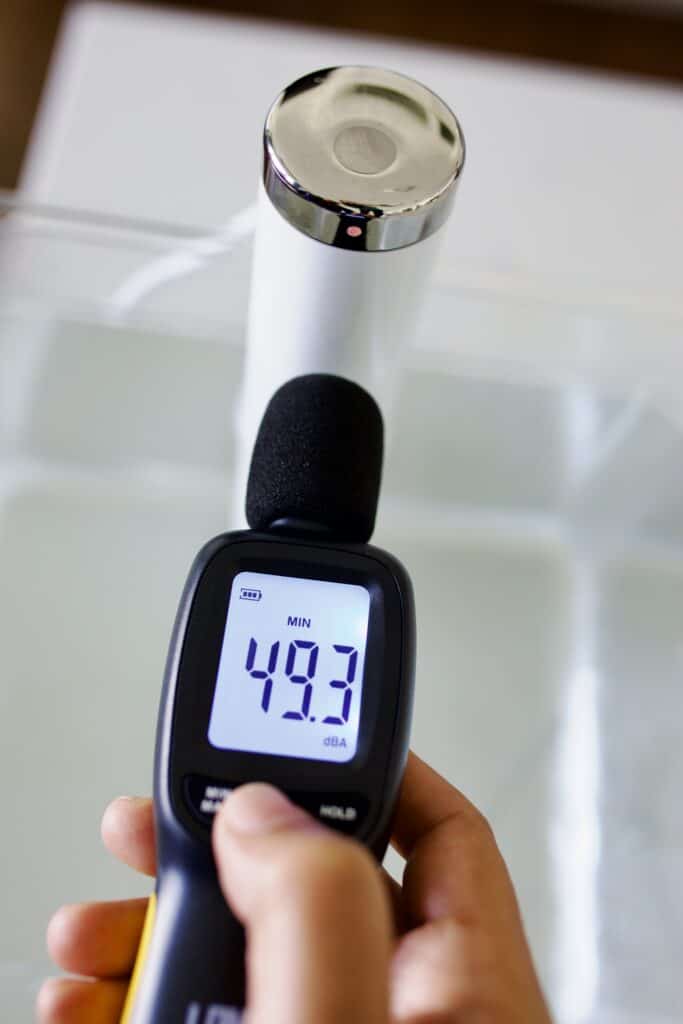
The exception here is if your water line is below the opening that water exits the machine from. What you hear is running water which is certainly louder than when the opening on the machine is under water.
Some hums can be annoying, but I don’t mind the Joule’s hum. It easily allows for normal voice level conversation around the unit.
Joule vs Joule Turbo
There are three things to consider when choosing between the Joule vs Joule Turbo: size, functionality and price.
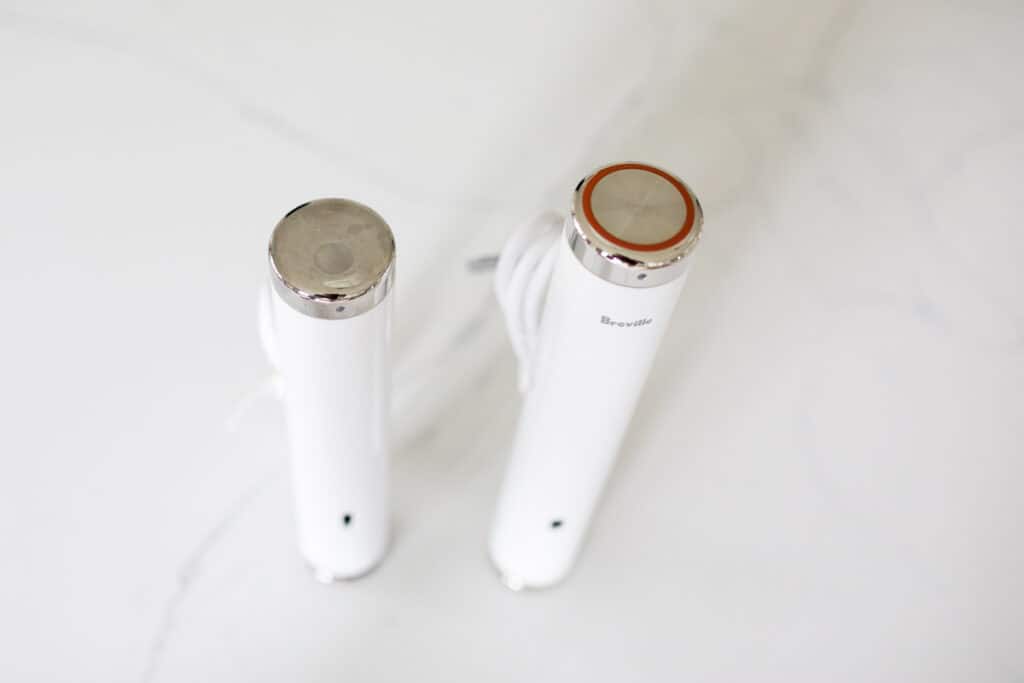
Size and Design
The Joule Turbo is roughly one inch longer at just over 12 inches vs 11 inches for the Joule. The Turbo also has stainless steel foot and cap, Breville logo at the top of the machine, and an added ring led at the top of the cap.
Functionality
The Joule Turbo allows you to cook in as little as half the time of the regular Joule. To use this option you must enter the thickness and weight of your protein and the Joule Turbo does the rest.
Rather than cook at the desired end temperature for the duration of the sous vide cook, the Joule Turbo uses Delta-T algorithms to start the temperature higher at the outset and gradually decline the temperature to the desired internal temperature of your food.
This speeds up the cooking sous vide process by up to 50% without sacrificing the quality of the result.
Price
Astoundingly, at the time of writing, there is no price difference between the Joule Turbo and Joule. Breville seems to be experimenting with price points and even whether to continue offering both models.
Breville Joule CS10001 vs CS20001
The Joule CS10001 vs CS20001 comparison is a common question. It actually boils down to what the top and base of the Joule are made of. The choices are Stainless Steel vs White Polycarbonate. The CS10001 was recently discontinued to streamline Joule’s product offering.
The Stainless Steel Joule model number is CS10001, while the White Polycarbonate is CS20001.
Both models have the same technical specifications otherwise. I have the stainless steel version, as you can see. The CS20001 is $50 cheaper than the CS10001, which puts it right in line with the Anova Precision Cooker 3.0, it’s most direct competitor.
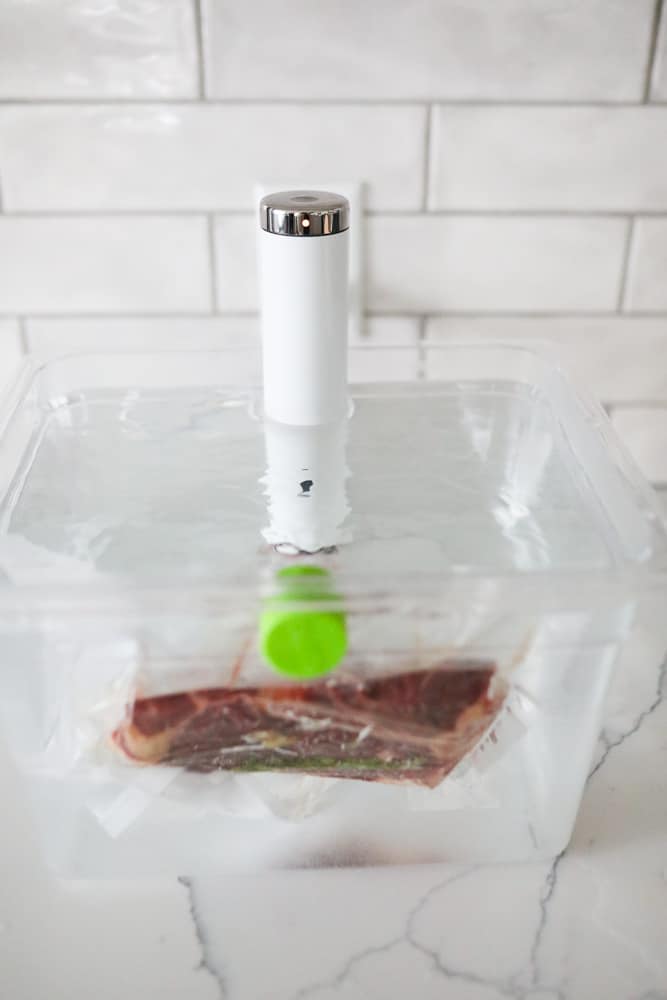
Conclusion
This Joule series is easily one of my top two favorite sous vide machine series, the Anova Precision Cooker is the other. If you have the budget, the 1100 Watt Joule cooker series, it’s a great option for its streamlined design, compact size, innovative features, and power.
Visually beautiful, small, easy to use, and has many useful features such as the Visual Doneness selection option in the app. The Joule Turbo is the only sous vide cooker to offer Delta-T driven smart technology to drastically reduce cooking time.
It can heat up to 10 gallons of water quickly, allowing you to sous vide whole briskets and the like with ease.
Breville continues to push the innovation curve with its Joule line of sous vide machines.
Check out other posts on kitchen appliances for sous vide: Vacuum Sealers and Kitchen Torches. Be sure to pair them with accessories like reusable silicone bags, plastic bags, and other sous vide bags.
Joule FAQs
The Breville Joule has not been discontinued. While one of the two very similar models has been discontinued, the Joule Sous Vide CS10001, the Joule Sous Vide CS20001 remains in production. This streamlines Breville’s product offering while keeping in production the better value between the two similar options.
Yes, the Joule sous vide is worth it. That is unless you’re one of the few without a smart phone or tablet. This is pound for pound the most powerful and smartest machine on the market, but is reliant on the availability of either Bluetooth or WiFi.
The main differences between the Joule and Joule Turbo is that the Turbo is about an inch longer and has the option of “turbo” cooking certain proteins to reduce the time needed by up to half. The Joule Turbo does this by using Delta-T algorithms.

